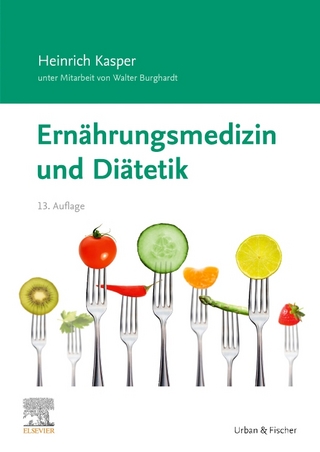
Functionality of Proteins in Food
Springer Berlin (Verlag)
978-3-642-63856-5 (ISBN)
The physico-chemical properties of proteins in food are of crucial importance in food quality and food processing. This book describes in detail the functional properties of food proteins and their modifications. Special attention is given to the improvement of existing and the design of new food systems using proteins with modified properties.
References.- 1 Solubility of Proteins.- 1.1 Introduction.- 1.2 Solubility of Meat and Fish Proteins.- 1.3 Solubility of Milk Proteins.- 1.4 Solubility of Egg Proteins.- 1.5 Solubility of Plant Proteins.- References.- 2 Water Holding Capacity of Proteins.- 2.1 Introduction.- 2.2 The Mechanism of Protein-Water Interaction.- 2.3 Water Holding Capacity of Proteins in Meat and Meat Products.- 2.4 Water Holding Capacity of Milk Proteins.- 2.5 Water Holding Capacity of Egg Proteins.- 2.6 Water Holding Capacity of Plant Proteins.- References.- 3 Emulsifying Properties of Proteins.- 3.1 Introduction.- 3.2 Hydrophobic and Hydrophilic Properties of Proteins.- 3.3 Interfacial Film Formation and Properties.- 3.4 Factors Affecting the Emulsifying Properties of Proteins.- 3.5 Emulsion Stability.- 3.6 Measuring Emulsifying Properties.- 3.7 Emulsifying Properties of Meat Proteins and Proteins Utilized as Extenders in Meat Products.- 3.8 Functionality of Nonmeat Proteins in Comminuted Meats.- 3.9 Milk Proteins as Emulsifiers in Food Systems.- 3.10 Emulsifying Properties of Egg Proteins.- 3.11 Emulsifying Properties of Plant Proteins.- References.- 4 Oil and Fat Binding Properties Of Proteins.- 4.1 Introduction.- 4.2 Fat Binding Properties of Proteins of Animal Origin.- 4.3 Fat Binding Properties of Proteins of Plant Origin.- References.- 5 Foaming Properties of Proteins.- 5.1 Introduction.- 5.2 The Mechanism of Foam Formation.- 5.3 Milk Proteins.- 5.4 Egg Proteins.- 5.5 Blood Proteins and Gelatin.- 5.6 The Foaming Properties of Plant Proteins.- References.- 6 Gelling Properties of Proteins.- 6.1 Introduction.- 6.2 The Mechanism of Protein Gel Formation.- 6.3 Gelling Properties of Meat Proteins.- 6.4 Gelling Properties of Milk Proteins.- 6.5 Gelling Properties of Egg Proteins.- 6.6 Gelling Properties of Soy Proteins.- References.
| Erscheint lt. Verlag | 1.11.2012 |
|---|---|
| Zusatzinfo | X, 373 p. |
| Verlagsort | Berlin |
| Sprache | englisch |
| Maße | 155 x 235 mm |
| Gewicht | 586 g |
| Themenwelt | Medizin / Pharmazie ► Gesundheitsfachberufe ► Diätassistenz / Ernährungsberatung |
| Naturwissenschaften ► Biologie ► Biochemie | |
| Naturwissenschaften ► Biologie ► Mikrobiologie / Immunologie | |
| Technik ► Lebensmitteltechnologie | |
| Schlagworte | Food • Lebensmittel • Processing • Proteine • proteins • soy |
| ISBN-10 | 3-642-63856-2 / 3642638562 |
| ISBN-13 | 978-3-642-63856-5 / 9783642638565 |
| Zustand | Neuware |
| Informationen gemäß Produktsicherheitsverordnung (GPSR) | |
| Haben Sie eine Frage zum Produkt? |
aus dem Bereich


